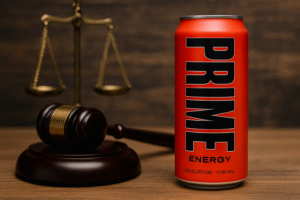Introduction
This complaint concerns the addictive design of the video game Minecraft, developed by Mojang Studios and owned by Microsoft. The plaintiffs, composed of minors and their parents, bring this action to recover damages for injuries caused by the deliberate design and marketing of an unreasonably addictive product.
Parties
-
Plaintiffs: Parents and guardians of minors under the age of twenty-four who suffered mental, physical, and emotional harm due to excessive use of Minecraft.
-
Defendants: Mojang Studios and Microsoft Corporation, corporations that designed, marketed, and sold Minecraft to consumers worldwide.
Jurisdiction and Venue
This Court has jurisdiction over this matter because the defendants conduct substantial business across the United States. The venue is proper because the harm occurred within this jurisdiction and the defendants purposefully directed their conduct toward residents of this district.
Factual Background
-
Minecraft was first released in 2011 and has become one of the most popular games worldwide, selling more than 200 million copies.
-
Defendants designed Minecraft as an open-world “sandbox” game with no natural stopping points, thus encouraging prolonged and compulsive play.
-
The game provides continuous rewards, achievements, and social interaction features that exploit psychological triggers.
-
Plaintiffs allege that defendants intentionally designed Minecraft to be addictive in order to maximize profits through prolonged engagement and in-game purchases.
-
Defendants failed to provide adequate warnings regarding the risks of gaming addiction, despite knowledge of its potential harm to young players.
Allegations
-
Failure to Warn: Defendants failed to disclose the known risks of video game addiction, leaving parents and minors unaware of the potential harms.
-
Defective Design: Minecraft contains design defects, including psychological reward loops and lack of stopping points, which render the product unreasonably dangerous.
-
Negligence: Defendants placed profits over player health by prioritizing engagement metrics while ignoring foreseeable risks.
Injuries and Damages
Plaintiffs, as a direct result of excessive gameplay, have suffered:
- Mental health injuries including anxiety, depression, mood swings, and suicidal ideation.
- Physical injuries including repetitive strain injury, poor posture, carpal tunnel syndrome, and seizures.
- Behavioral and educational harm including failing grades, social withdrawal, aggression, and loss of motivation.
The severity of damages falls into three tiers:
- Tier 1: Permanent injuries valued at $275,000 to $2,000,000.
- Tier 2: Moderate injuries valued at $50,000 to $250,000.
- Tier 3: Minor injuries valued at $5,000 to $40,000.
Eligibility of Plaintiffs
A plaintiff qualifies to file this action if:
- The gamer is twenty-four years old or younger.
- The gamer played at least two hours per day for five consecutive weeks.
- The gamer received a medical diagnosis of addiction-related conditions, including depression, anxiety, seizures, or orthopedic injuries.
- The gamer sought or received medical treatment for addiction or related disorders.
Relief Sought
Plaintiffs demand judgment against the defendants for:
- Compensatory damages for medical expenses, emotional distress, and loss of quality of life.
- Restitution of financial losses due to in-game purchases.
- Punitive damages to deter future misconduct by defendants.
- Injunctive relief requiring defendants to implement safeguards such as parental controls, addiction warnings, and time-limit features.
- Any further relief deemed proper by the Court.
Conclusion
Defendants knowingly designed and sold a dangerously addictive video game. Plaintiffs seek to hold them accountable for the widespread harm inflicted on children and families. The Court should award damages, issue corrective measures, and establish accountability for the gaming industry.

